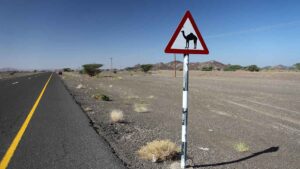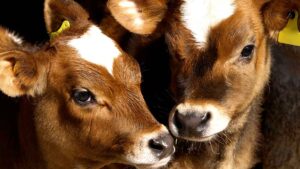As the drought rolls on these are the stocks feeling the pain – and the plenty

Another long, hot summer is on the cards, but many of Australia’s listed agriculture companies are insulated from the worst of the dry weather.
The Bureau of Meteorology is predicting a dry El Nino summer in the East at “triple the normal risk”, with the outlook for Western Australia, Queensland and the Top End of the Northern Territory also unusually dry.
Pac Partners agriculture expert Paul Jensz refuses to call the East Coast weather a drought — it’s “dry weather” — and says the impact on many listed agriculture companies is largely secondary, coming in the form of higher water prices.
>>Scroll down for a who’s who of growers and farmers on the ASX.
East Coast water prices have risen from $150 a megalitre (ML) to $400/ML in the last 14 months, he told Stockhead.
For companies that need to buy water on the spot market, this can be a problem.
Nut grower Select Harvests (ASX:SHV), which offered investors a positive outlook for 2019 at its AGM on Thursday, says water “remains a concern”.
The company owns a third of its water requirements, leases another third, and buys the remainder on the spot market.
“We are expecting an uplift in water related operating costs for the 2019 year. This will be partially offset by savings achieved in other operating expenditure categories. The expected yield increase will also favourably impact the company’s cost per kg due to volume efficiencies,” the company said on Thursday.
- Subscribe to our daily newsletter
- Bookmark this link for small cap news
- Join our small cap Facebook group
- Follow us on Facebook or Twitter
Mr Jensz says sectors such as nuts are better positioned in dry times because they only need water to “finish” the crop at the very end of the growing period, compared to grain or dairy farmers who need water throughout the growing cycle.
The East Coast has not reached a point when water restrictions are being put in place.
But if the dry weather continues for three or four years, that’s when farmers will be stung with not only higher prices, but less water to use as well, Mr Jensz says.
Cattle farmers Webster (ASX:WBA) and Australian Agricultural Company (ASX:AAC) are feeling the pinch.
A lack of feed at its Queensland properties is forcing AACo to shift stock around the country, generating higher freight costs and higher feed costs generally, while Webster, which also owns a cropping division and water rights, has sold down stock.
Cattle trader Wellard (ASX:WLD) says the East Coast dry period hasn’t yet translated into lower prices for slaughter cattle and says this “limits the potential of our trade in processor-ready cattle to Vietnam, due to importers restricted ability to make a profit on such trades”.
Embrace the drought
For other companies a bit of rough weather is a blessing, as well as a curse.
“Drought isn’t all doom and gloom. There is opportunity for investors who can perhaps can trade around those activities,” Mr Jensz says.
“There could be investors who are waiting for a drought as an entry point. A school of thought is that you enter when there are issues like drought or low commodity prices.”
Chicken musher Ridley Corporation (ASX:RIC), which makes animal feed from mashed up fish and chicken, is benefiting from low feed available on the East Coast, as drought-related beef and sheep feeding is expected to continue throughout this quarter.
Namoi Cotton (ASX:NAM) is bracing for the 2019 cotton crop to be about half of what it saw last season, as the drought drains water reserves, while its winter crops such as chickpeas have suffered as well.
But at the same time, their books are being bolstered by Australian graziers turning to cotton seed as drought-feed. It says demand has pushed cotton seed prices to $650/metric tonne.
Farming is an all-weather activity
It’s not just the dry that agriculture businesses must weather, but storms and water temperatures as well.
Grape grower Murray River Organics’ (ASX:MRG) 18 month-long saga began with autumn storms in early 2017, which led to the first round of write downs totalling $8.3 million because of damaged crops.
After several more sets of guidance revising down expected yields in 2017 and this year, they are promising better yields in 2019 “assuming no significant weather events”.
Fish farmers Huon Aquaculture (ASX:HUO), New Zealand King Salmon (ASX:NZK) and Tassal (ASX:TGR) are all waking up to the problems of higher sea temperatures.
NZ King Salmon has put in place breeding programs to protect against ongoing hot sea temperatures, like those they saw over last summer which harmed fish survival.
In July, Huon lost a Federal Court case against rivals Tassal and Petuna and the Commonwealth over salmon numbers in Macquarie Harbour in Tasmania.
They had been seeking an improved regulatory regime.
“The abnormal weather patterns being experienced over the summer only served to emphasise the critical importance of getting the right regulatory oversight and control for this unique waterway,” the company said in its annual report.
| Ticker | Company | Intraday price Nov 29 | 6 month change % | 1 year change % | Market cap | |
|---|---|---|---|---|---|---|
| MCA | MURRAY COD AUSTR | Fish | 0.19 | 2.25 | 2.0952 | 76.62M |
| SFG | SEAFARMS GROUP | Prawns | 0.1 | 0.3415 | 0.6923 | 183.40M |
| SHV | SELECT HARVESTS | Nuts | 5.62 | -0.1954 | 0.2841 | 530.81M |
| NZK | NEW ZEALAND KING SALMON | Fish | 2.38 | 0.1415 | 0.21 | 335.34M |
| RIC | RIDLEY CORP | Animal food | 1.43 | 0.0034 | 0.117 | 455.57M |
| TGR | TASSAL GROUP | Fish | 4.28 | 0.085 | 0.0796 | 769.33M |
| BUG | BUDERIM GROUP | Ginger | 0.25 | -0.2187 | -0.0385 | 21.51M |
| HUO | HUON AQUACULTURE | Fish | 4.57 | -0.0109 | -0.0461 | 397.38M |
| AAC | AUSTRALIAN AGRIC | Cattle | 1.2 | -0.0328 | -0.0781 | 711.26M |
| NAM | NAMOI COTTON | Cotton | 0.41 | -0.18 | -0.2545 | 57.36M |
| MTM | MARETERRAM | Fish | 0.2 | -0.2407 | -0.2679 | 31.68M |
| OGA | OCEAN GROWN ABALONE | Abalone | 0.16 | 0.0667 | -0.2727 | 27.86M |
| TPE | TPI ENTERPRISES | Opium | 1.25 | -0.1608 | -0.5 | 97.30M |
| WLD | WELLARD | Cattle trader | 0.05 | -0.6 | -0.68 | 25.50M |
| MRG | MURRAY RIVER ORGANICS | Grapes | 0.09 | -0.6833 | -0.7935 | 41.21M |
| AS1 | ANGEL SEAFOOD | Fish | 0.14 | 0.1154 | -- | 18.28M |
| WOA | WIDE OPEN AGRICU | Cropping and livestock | 0.13 | -- | -- | 9.18M |
| VTH | VITALHARVEST | Diversified | 0.98 | -- | -- | -- |
UNLOCK INSIGHTS
Discover the untold stories of emerging ASX stocks.
Daily news and expert analysis, it's free to subscribe.
By proceeding, you confirm you understand that we handle personal information in accordance with our Privacy Policy.








